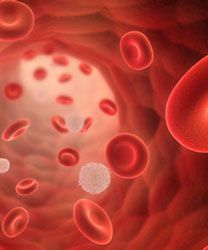Maintenance Lenalidomide Recommended for Approval in Post-ASCT Myeloma by CHMP
Based on data from 2 phase III trials, the EMA’s CHMP has recommended approval of lenalidomide as a maintenance therapy following autologous stem cell transplant for patients with newly diagnosed multiple myeloma.

Based on data from 2 phase III trials, the EMA’s Committee for Medicinal Products for Human Use (CHMP) has recommended approval of lenalidomide (Revlimid) as a maintenance therapy following autologous stem cell transplant (ASCT) for patients with newly diagnosed multiple myeloma, according to Celgene, the manufacturer of the treatment.
The application is based on data from CALGB 100104 and IFM 2005-02. Both studies were unblinded after post-ASCT maintenance lenalidomide significantly reduced the risk of disease progression or death in patients with multiple myeloma.
The positive opinion from the CHMP will now be reviewed by the European Commission. A final approval decision for use in the European Union is expected in about 2 months.
"Studies show that maintenance treatment after ASCT with Revlimid may help control residual malignant cells and delay tumor growth by enhancing immune function," Michel Attal, MD, executive director of the Institut Universitaire du Cancer Toulouse Oncopole and Institut Claudius Regaud, France, said in a statement. "Our primary goal is to delay disease progression for as long as possible, and we have seen in several independent studies, that Revlimid maintenance after ASCT can halve the risk of disease progression by sustaining the response."
The doubled-blind phase III CALGB 100104 trial randomized patients with multiple myeloma to maintenance lenalidomide or placebo after first-line chemotherapy and ASCT. Lenalidomide was started at 10 mg daily and elevated to 15 mg daily at 3 months for patients who tolerated the initial treatment. The trial was conducted at 47 locations in the United States. The primary endpoint was time to tumor progression.
IFM 2005-02 was a phase III double-blind trial in which treatment-naïve patients with multiple myeloma who had received induction chemotherapy and ASCT were randomized in a 1:1 ratio to consolidation lenalidomide (25 mg/day on days 1-21 of each 28-day cycle, for 2 cycles) followed by placebo or maintenance lenalidomide (10 mg/day induction dose increased to 15 mg/day at 3 months if tolerated). The study was conducted at 78 centers in France, Belgium, and Switzerland, and had a primary endpoint of posttransplant progression-free survival.
A meta-analysis of data pooled from CALGB 100104, IFM 2005-02, and a third randomized phase III trial, GIMEMA-RVMM-PI-209, was presented at the 2016 ASCO Annual Meeting. The findings showed that maintenance lenalidomide following frontline treatment with high-dose melphalan and ASCT reduced the risk of death by 26% versus placebo or no maintenance in patients with multiple myeloma. The 7-year overall survival (OS) rate was 62% with maintenance lenalidomide versus 50% in patients who did not receive the therapy.
In the pooled analysis, 605 patients had been randomized between 2005 and 2009 to lenalidomide maintenance and 604 patients received placebo or no maintenance. Baseline characteristics were well balanced between the 2 arms. Eighty-two percent of patients received single ASCT and 18% received tandem ASCT. Following induction therapy and ASCT, a complete response (CR) or very good partial response (VGPR) was reached by 55% of the patients.
At a median follow-up of 80 months, the median OS had not been reached in the maintenance lenalidomide arm versus 86 months in the control arm (HR, 0.74; 95% CI, 0.62-0.89;P= .001). The researchers estimated this represents a 2.5-year OS benefit with maintenance lenalidomide. The reduction in the risk of death with lenalidomide was 14% (HR, 0.86; 95% CI, 0.65-1.15) in patients who had a partial response or less to induction treatment and ASCT, and 30% (HR, 0.70; 95% CI, 0.54-0.90) in patients who achieved a CR or VGPR.
The 5-year OS rate was 71% with maintenance lenalidomide versus 66% in the control arm. The 6-year OS rates were 65% versus 58%, respectively.
The OS benefit observed in the pooled analysis is consistent with previously reported progression-free survival data, which showed that in each of the phase III studies, maintenance lenalidomide reduced the risk of disease progression or death by approximately 50%.
The risk of developing a hematologic or solid tumor second primary malignancy (SPM) was higher in patients receiving lenalidomide, with hazard ratios of 2.03 (95% CI, 1.14-3.61;P= .015) and 1.71 (95% CI, 1.04-2.79;P= .032), respectively. There were 36 hematologic SPMs in the lenalidomide cohort compared with 17 in the control group. Cases of solid tumor SPMs were 43 and 25, respectively.
“Despite substantial progress made so far in multiple myeloma treatment, it remains an incurable disease. We welcome this CHMP opinion as it confirms the important role that Revlimid plays in treating multiple myeloma, extending the use of Revlimid across the disease continuum. At Celgene, we aspire to turn some of the most challenging diseases, like multiple myeloma, into manageable conditions. Therefore, we will continue to invest more than one-third of our revenues back into research and development," Tuomo Pätsi, president of Celgene in Europe, the Middle East and Africa, said in a statement.
Reference:
Attal M, Palumbo A, Holstein SA, et al. Lenalidomide (LEN) maintenance (MNTC) after high-dose melphalan and autologous stem cell transplant (ASCT) in multiple myeloma (MM): a meta-analysis (MA) of overall survival (OS).J Clin Oncol34, 2016 (suppl; abstr 8001).
Gasparetto Explains Rationale for Quadruplet Front Line in Transplant-Ineligible Myeloma
February 22nd 2025In a Community Case Forum in partnership with the North Carolina Oncology Association, Cristina Gasparetto, MD, discussed the CEPHEUS, IMROZ, and BENEFIT trials of treatment for transplant-ineligible newly diagnosed multiple myeloma.
Read More